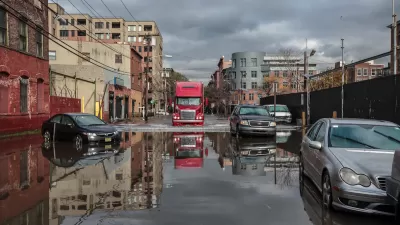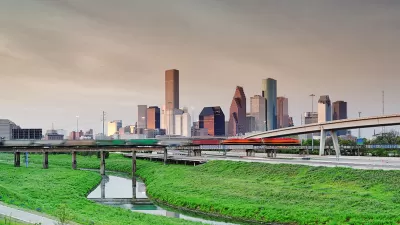Resilience has entered into the planning and urbanism lexicon as a large challenge for all places pursuing prosperous, sustainable futures. A new study examines the world’s leading cities for lessons in resilience.

Richard Barkham shares news of a study called “Resilient Cities” by Global property group Grosvenor to study and quantify the resilience of 50 of the world’s most important cities. Here’s how Barkham describes the study: “The study examined and ranked 50 of the world’s most important cities. Although these cities account for only 7 percent of the world’s population, they represent the major focus of most global real estate investment and consume the lion’s share of the world’s resources. Thus, the fact that so many struggle to meet basic levels of resilience indicates how unprepared the rest of the world is to face the next century’s major challenges.”
“Results from the study indicate that Canadian cities are the world’s most resilient, taking the three top positions, with Toronto having the highest score, followed by Vancouver and Calgary. Two inland U.S. cities, Chicago and Pittsburgh, come in next.”
“But the sand shifts when the cities are ranked purely in terms of adaptive capacity, with U.S. cities taking six of the seven highest positions. New York City leads the pack, followed by Toronto, Los Angeles, Washington, D.C., Chicago, San Francisco, and Houston.”
Barkham’s coverage also provides further explanation of terms like “vulnerability” and “adaptive capacity,” as well as a few case studies.
FULL STORY: Investing in Resiliency: Ranking the Most Resilient Cities

Study: Maui’s Plan to Convert Vacation Rentals to Long-Term Housing Could Cause Nearly $1 Billion Economic Loss
The plan would reduce visitor accommodation by 25,% resulting in 1,900 jobs lost.

North Texas Transit Leaders Tout Benefits of TOD for Growing Region
At a summit focused on transit-oriented development, policymakers discussed how North Texas’ expanded light rail system can serve as a tool for economic growth.

Why Should We Subsidize Public Transportation?
Many public transit agencies face financial stress due to rising costs, declining fare revenue, and declining subsidies. Transit advocates must provide a strong business case for increasing public transit funding.

How Community Science Connects People, Parks, and Biodiversity
Community science engages people of all backgrounds in documenting local biodiversity, strengthening connections to nature, and contributing to global efforts like the City Nature Challenge to build a more inclusive and resilient future.

Alabama: Trump Terminates Settlements for Black Communities Harmed By Raw Sewage
Trump deemed the landmark civil rights agreement “illegal DEI and environmental justice policy.”

Dear Tesla Driver: “It’s not You, It’s Him.”
Amidst a booming bumper sticker industry, one writer offers solace to those asking, “Does this car make me look fascist?”
Urban Design for Planners 1: Software Tools
This six-course series explores essential urban design concepts using open source software and equips planners with the tools they need to participate fully in the urban design process.
Planning for Universal Design
Learn the tools for implementing Universal Design in planning regulations.
City of Santa Clarita
Ascent Environmental
Institute for Housing and Urban Development Studies (IHS)
City of Grandview
Harvard GSD Executive Education
Toledo-Lucas County Plan Commissions
Salt Lake City
NYU Wagner Graduate School of Public Service





























